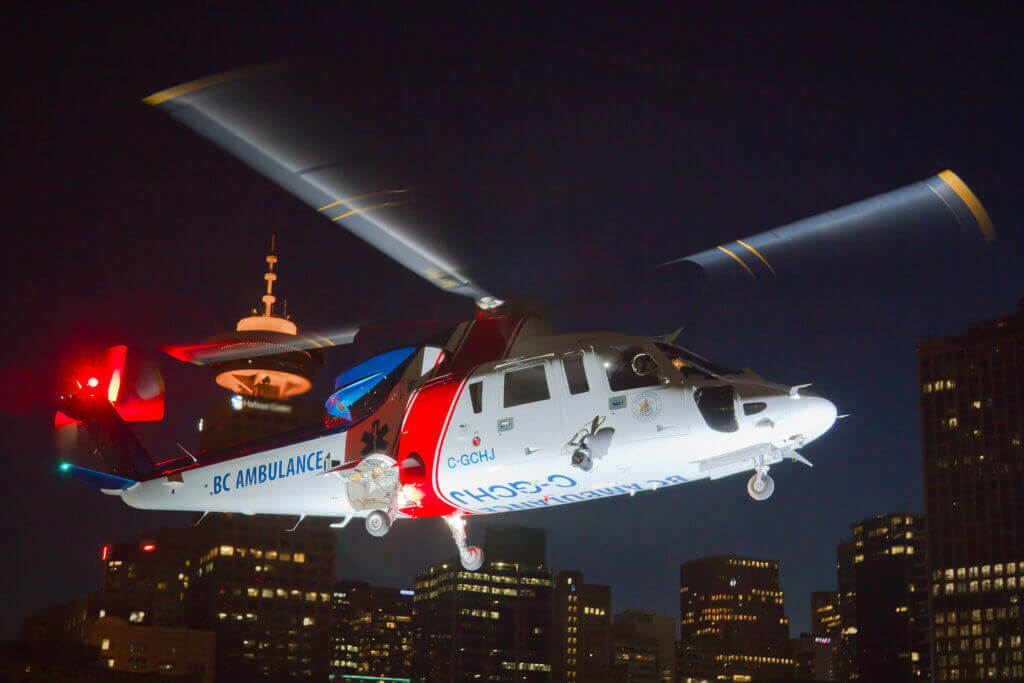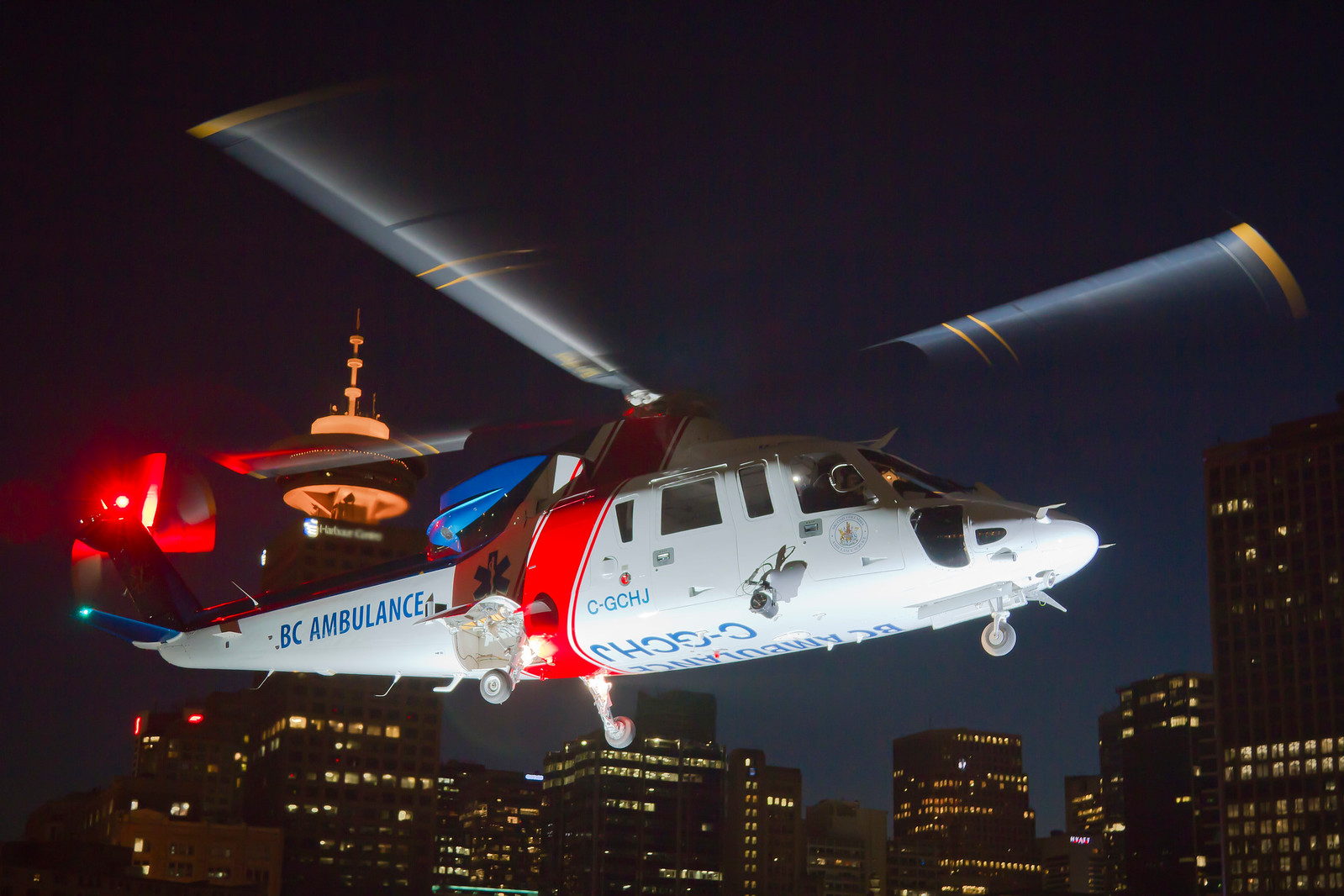The Transportation Safety Board of Canada determined that flying under night visual flight rules (VFR) without adequate visual reference to the ground, along with a lack of crew coordination and ineffective standard operating procedures (SOPs) led to a Helijet Sikorsky S-76 helicopter nearly colliding with terrain in Tofino, British Columbia in November 2015. The details are in the investigation report, released on Dec. 20.

On Nov. 15, 2015, a Helijet International Inc. Sikorsky S-76 helicopter departed from Vancouver, British Columbia, on a night VFR medical evacuation flight to the Tofino/Long Beach Airport. The intended landing area was a temporarily lit helipad at the airport. There were two pilots and two paramedics on board.
While on final approach to the landing area, the flight crew lost control of the helicopter, which descended about 67 feet below the landing area along the nearby shoreline. The crew managed to regain control of the helicopter three feet above ground over the beach, then flew back up to conduct a second approach, while still experiencing flight control difficulties. The second time, the helicopter landed successfully, and there were no injuries.
The investigation found that the night VFR flight was conducted without sufficient ambient or cultural lighting (for example, lights on buildings and roads) to maintain adequate visual reference to the ground. In addition, the flight crew did not conduct the required briefings. As a result, by the final approach, neither crew member had developed a correct or complete understanding of the characteristics and challenges of the landing site.
When the pilot flying realized that the location of the landing area was closer than expected, the large control inputs made to adjust the descent angle and speed resulted in a hazardous approach profile, which went unrecognized as both flight crew members were occupied with maintaining visual reference.
Further, the investigation found that company SOPs provided little guidance in a number of areas, which contributed to poor decision-making and coordination.
This investigation once again highlights the risks of flying under night VFR without sufficient lighting to maintain adequate visual reference. Transport Canada (TC) regulations do not clearly define what visual references are required at night. Many pilots believe that it is acceptable to fly at night as long as the reported weather conditions are acceptable, regardless of lighting conditions.
During the investigation into a 2013 fatal helicopter accident, the board made a recommendation to Transport Canada to clearly define the visual references required to reduce the risks associated with night VFR flight. TC indicated that it will initiate educational activities and a regulatory amendment. However, until specific details about proposed regulatory changes are fully known, the TSB cannot evaluate if these actions will fully address this safety deficiency. As such, the TC response was assessed as Satisfactory Intent.
Helijet had implemented a safety management system (SMS) although it was not required by regulation. At the time of the occurrence, the SMS was not yet fully developed, and it had not been assessed by TC. This occurrence was the result of risks of night operations not being effectively mitigated by the crew and more broadly by the company. Safety management and oversight is on the TSB Watchlist.
Following the occurrence, Helijet International Inc. reviewed its SOPs and increased employee training, specifically on crew resource management, night VFR operations, the black-hole effect, and unprepared landing sites. The company developed a risk management plan for night VFR operations. It will also be providing night vision goggles to its flight crews.
The Tofino/Long Beach Airport installed the necessary infrastructure for night operations and was fully night-certified by TC in January 2017.









